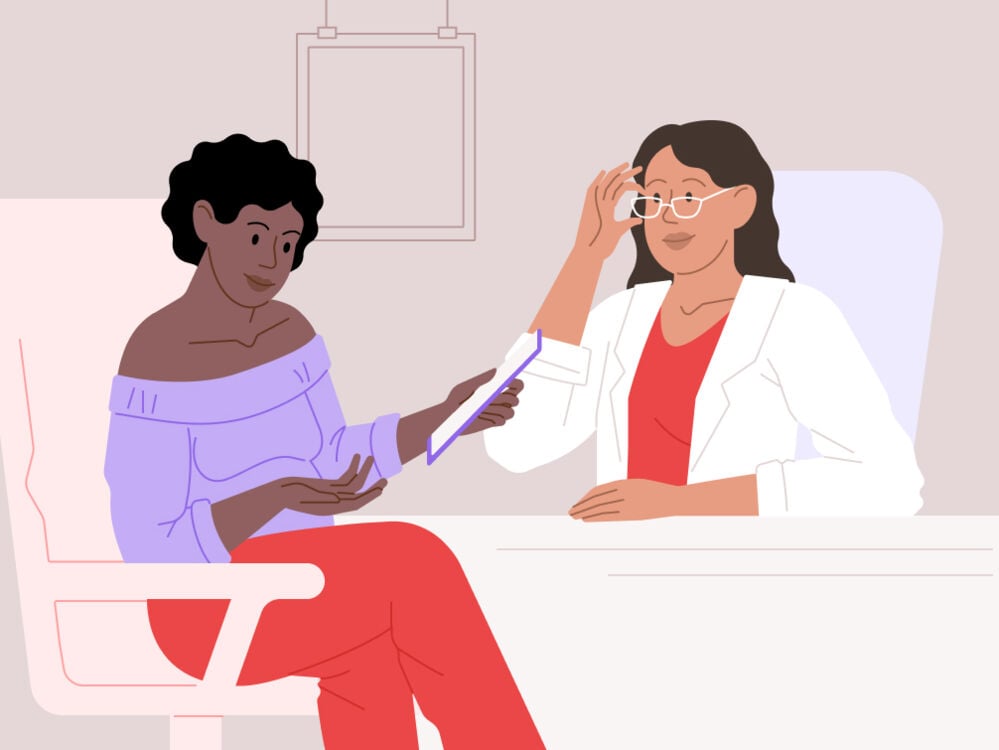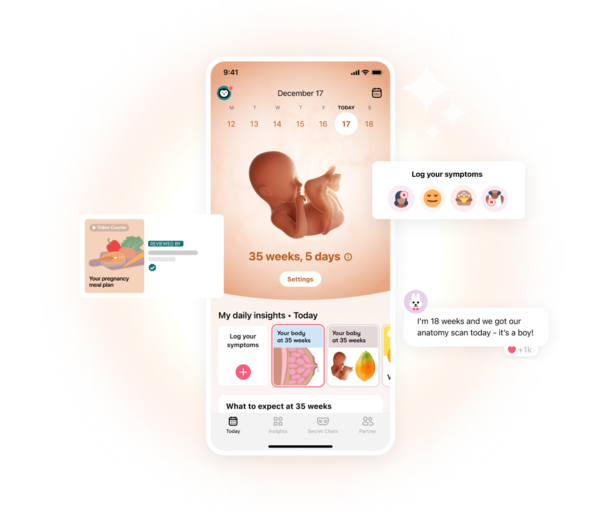Thinking about asking for a cesarean section (C-section)? You’re not alone. The number of C-sections is rising worldwide. Here's what you should know before you book your section.
-
Tracking cycle
-
Getting pregnant
-
Pregnancy
-
Help Center
-
Flo for Partners
-
Anonymous Mode
-
Flo app reviews
-
Flo Premium New
-
Secret Chats New
-
Symptom Checker New
-
Your cycle
-
Health 360°
-
Getting pregnant
-
Pregnancy
-
Being a mom
-
LGBTQ+
-
Quizzes
-
Ovulation calculator
-
hCG calculator
-
Pregnancy test calculator
-
Menstrual cycle calculator
-
Period calculator
-
Implantation calculator
-
Pregnancy weeks to months calculator
-
Pregnancy due date calculator
-
IVF and FET due date calculator
-
Due date calculator by ultrasound
-
Medical Affairs
-
Science & Research
-
Pass It On Project New
-
Privacy Portal
-
Press Center
-
Flo Accuracy
-
Careers
-
Contact Us
Choosing a C-section? Here's what you should know


Every piece of content at Flo Health adheres to the highest editorial standards for language, style, and medical accuracy. To learn what we do to deliver the best health and lifestyle insights to you, check out our content review principles.
One in 5 babies across the globe is now born by C-section, according to a 2021 World Health Organization report. In the United States, the number is even higher: nearly 1 in 3.
But here’s the thing: C-sections are riskier than vaginal births in both the short and long term. In fact, vaginal births are preferred by medical professionals in most situations.
When it comes to giving birth, it’s important to weigh all of your options.
So, why are C-sections becoming more common?
As with most things, there isn’t one neat explanation.
When there’s a risk to a mom or baby’s health, a C-section may be the best option. And since many of us are having babies later in life, more moms-to-be have age-related health issues that raise those risks — like diabetes, high blood pressure, and being overweight.
In fact, one study showed that moms over 40 are four times more likely to have a C-section for health reasons compared to moms under 30.But age isn’t the only reason for the rise. Some are choosing to have a C-section without a medical reason.
Research has found that people often ask for a C-section because they think it’ll be faster, more convenient, less painful, and overall less scary than vaginal birth. Some might also believe that it’ll be easier to recover from a C-section or that it’s a more “modern” way to give birth.
Take a quiz
Find out what you can do with our Health Assistant
Why is having a C-section a big decision?
Most of the time, C-sections go smoothly. However, data from the American College of Obstetricians and Gynecologists shows that the risk of severe complication is three times higher for a C-section (2.7%) than a vaginal birth (0.9%).
That’s why C-sections are used when the risks to your or your baby’s health outweigh the potential risks of a C-section. In other words, if there is a risk to your or your baby’s life, your doctor will recommend a C-section.
Sound scary? We know. But knowledge is power.
What's the difference between an elective and an emergency C-section?
There are two types of C-sections. A planned (or elective) C-section is scheduled before labor. An unplanned C-section takes place during labor (or before labor starts) if an unexpected medical problem comes up, which in some cases may be an emergency.
For example, you might have a planned C-section if you have placenta previa (when the placenta covers the opening of your uterus), which prevents a vaginal birth. In this situation, the risks of a C-section are lower than the heavy bleeding you could experience during a vaginal birth, plus the risk to your baby of not being able to get out.
Or if your baby’s heart rate is too fast or slow during a vaginal birth, your doctor might perform an emergency C-section to save your baby’s life.
What to consider before an elective C-section
If you have a choice about having a C-section, how do you make sure you’re doing what’s safest for you and your baby?
- Read about the risks and benefits of vaginal births and C-sections.
- Have a conversation with your doctor to understand your unique situation. Will a C-section be riskier? Or a vaginal birth?
- If you have any doubts about your doctor’s recommendation, get a second opinion from another doctor.
To help you gain the knowledge you need before your baby’s birth, we’ve compiled a list of the most common C-section complications for moms and for babies.

What are the risks of having a C-section for a mom?
Infection
As with any surgery, there’s a risk of infection — usually in the lining of your uterus, your urinary tract, or where your incision was made.
Post-C-section infections are relatively common, affecting between 2% and 7% of women who give birth that way. These infections can be easily treated with antibiotics but can also cause additional pain and prolong your recovery time, which is typically about four to eight weeks for a complication-free C-section.
Injury
Your bladder, bowel, and other pelvic organs can be nicked during surgery. This is pretty rare. Bladder injuries are the most common and only happen in around 2 out of every 1,000 C-sections. But if it happens, you might need another surgery to repair the injury.
Blood clots
After a C-section, 3 in 1,000 women will develop a blood clot. This number is four times that of women who have had a vaginal birth that’s not induced.
The danger with blood clots is that they can travel to the lungs — called a pulmonary embolism — which is one of the leading causes of maternal deaths.
C-section recovery time
Women who have vaginal births, on average, tend to have a quicker recovery and a shorter stay in the hospital (in the United States, it’s one to two days for a vaginal birth, and two to four days for a C-section).
And then there’s the post-procedure restrictions. Most moms are told not to drive for at least two weeks after surgery because they might not be able to make quick maneuvers due to pain. Whether you’ve had a vaginal birth or C-section, you’ll be told not to lift anything heavy (like a new baby’s older sibling) for six to eight weeks. But if you have a C-section, you may need to stick to the longer end of this range, making it tricky to take care of siblings during recovery.
Scar tissue pain
Some people form scar tissue around their C-section incision as it heals, which can cause chronic pain (pain that recurs over a long period of time). It can also make future operations (C-sections or any other abdominal surgery you may need in the future) more difficult.
What are the risks of a C-section for baby?
Breathing problems
Babies have fluid in their lungs before they’re born. During a vaginal birth, most of that fluid gets squeezed out as they travel down the birth canal. Because this squeezing doesn’t happen during a C-section, babies born this way may still have some fluid left in their lungs.
This leftover fluid can make it harder for your baby to breathe. Fortunately, when babies are given oxygen by their health care providers, this usually resolves itself within 24 hours. Still, it can be very distressing for parents and can delay getting started with breastfeeding, if that’s something you want to do.
Higher risk of certain health issues
Some studies have shown that children born by C-section may be more likely to have some conditions, including Type 1 diabetes and asthma.
The thinking here is that babies who are born vaginally absorb some of their moms’ microbiome (the collection of bacteria that live in our bodies, which influences our immune systems) in the birth canal, whereas babies born via C-section don’t get the same immune-boosting microbiome benefits.
Making a birth plan
Of course, it’s understandable to want to have some control over a life experience that can feel unpredictable. And some might request a C-section for very significant mental health reasons — for instance after having a traumatic vaginal birth in their last pregnancy or after past sexual abuse. (If this is you, don’t be afraid to talk to your doctor. They’re trained to support you through these situations. They’ll listen to your concerns and help you create a birth plan you’re comfortable with.)
If your doctor recommends a C-section for health reasons, that will likely be the route you take — because they will have determined that the risks to your or your baby's health outweigh the potential risks of a C-section. Doctors are experts in this stuff. At the same time, remember that it’s your right to ask plenty of questions.
But if you’re in a position to choose how you give birth, arming yourself with facts will mean you give yourself the best chance of making the right decision for you and your baby.


Hey, I'm Anique
I started using Flo app to track my period and ovulation because we wanted to have a baby.


The Flo app helped me learn about my body and spot ovulation signs during our conception journey.


I vividly
remember the day
that we switched
Flo into
Pregnancy Mode — it was
such a special
moment.
Real stories, real results
Learn how the Flo app became an amazing cheerleader for us on our conception journey.
References
“Safe Prevention of the Primary Cesarean Delivery.” The American College of Obstetricians and Gynecologists, Mar. 2014, www.acog.org/clinical/clinical-guidance/obstetric-care-consensus/articles/2014/03/safe-prevention-of-the-primary-cesarean-delivery.
“Breastfeeding and Delayed Milk Production.” Stanford Medicine Children’s Health. www.stanfordchildrens.org/en/topic/default?id=breastfeeding-and-delayed-milk-production-90-P02655. Accessed 21 Sep. 2023.
“Caesarean Section Rates Continue to Rise, amid Growing Inequalities in Access.” World Health Organization, 16 June 2021, www.who.int/news/item/16-06-2021-caesarean-section-rates-continue-to-rise-amid-growing-inequalities-in-access.
“Recovery: Caesarean Section.” NHS, www.nhs.uk/conditions/caesarean-section/recovery. Accessed 28 Sep. 2023.
“Overview: Caesarean Section.” NHS, www.nhs.uk/conditions/caesarean-section/. Accessed 28 Sep. 2023.
Clark, Steven L., et al. “Association of Obstetric Intervention with Temporal Patterns of Childbirth.” Obstetrics and Gynecology, vol. 124, 2014, pp. 873–80, doi:10.1097/AOG.0000000000000485.
Colomar, Mercedes, et al. “Do Women Prefer Caesarean Sections? A Qualitative Evidence Synthesis of Their Views and Experiences.” PLOS ONE, vol. 16, no. 5, 2021, https://doi.org/10.1371/journal.pone.0251072.
“Considering a Caesarean Birth Patient Information Leaflet.” Royal College of Obstetricians and Gynaecologists, 4 Aug. 2022, www.rcog.org.uk/for-the-public/browse-our-patient-information/considering-a-caesarean-birth-patient-information-leaflet.
“C-Section.” Cleveland Clinic, my.clevelandclinic.org/health/treatments/7246-cesarean-birth-c-section. Accessed 28 Sep. 2023.
“Cesarean Birth.” Mayo Clinic, 16 June 2022, mayoclinic.org/tests-procedures/c-section/about/pac-20393655.
“Cesarean Birth.” The American College of Obstetricians and Gynecologists, May 2022, www.acog.org/womens-health/faqs/cesarean-birth.
Dietl, A., et al. “Pregnancy and Obstetrical Outcomes in Women over 40 Years of Age.” Geburtshilfe und Frauenheilkunde, vol. 75, no. 8, 2015, pp. 827–32, https://doi.org/10.1055/s-0035-1546109.
“Births: Method of Delivery.” Centers for Disease Control and Prevention, www.cdc.gov/nchs/fastats/delivery.htm. Accessed 28 Sep. 2023.
Fawcus, Sue, and Jagidesa Moodley. “Postpartum Haemorrhage Associated with Caesarean Section and Caesarean Hysterectomy.” Best Practice and Research Clinical Obstetrics and Gynaecology, vol. 27, no. 2, Apr. 2013, pp. 233–49, https://doi.org/10.1016/j.bpobgyn.2012.08.018.
“Going Home after a C-Section.” MedlinePlus, medlineplus.gov/ency/patientinstructions/000624.htm. Accessed 21 Sep. 2023.
Ibrahim, Nada, et al. “Incidence and Risk Factors of Bladder Injury during Cesarean Delivery: A Cohort Study.” Archives of Gynecology and Obstetrics, vol. 307, no. 2, 2023, pp. 401–08, https://doi.org/10.1007/s00404-022-06447-x.
Jha, Kanishk, et al. “Transient Tachypnea of the Newborn.” StatPearls, StatPearls Publishing, 2023.
Latt, Su Mon, et al. “Primary Postpartum Haemorrhage and Longer-Term Physical, Psychological, and Psychosocial Health Outcomes for Women and Their Partners in High Income Countries: A Mixed-Methods Systematic Review.” PLOS ONE, vol. 18, no. 6, 2023, https://doi.org/10.1371/journal.pone.0274041.
Liu, Ziwei, et al. “Changes in Coagulation and Fibrinolysis in Post-Cesarean Section Parturients Treated with Low Molecular Weight Heparin.” Clinical and Applied Thrombosis/Hemostasis, vol. 26, 2020, https://doi.org/10.1177%2F1076029620978809.
Rydahl, Eva, et al. “Cesarean Section on a Rise: Does Advanced Maternal Age Explain the Increase? A Population Register-Based Study.” PLOS One, vol. 14, no. 1, Jan. 2019, https://doi.org/10.1371%2Fjournal.pone.0210655.
Sevelsted, Astrid, et al. “Cesarean Section and Chronic Immune Disorders.” Pediatrics, vol. 135, no. 1, Jan. 2015, pp. 92–98, https://doi.org/10.1542/peds.2014-0596.
“Skin-to-Skin Contact.” UNICEF United Kingdom, www.unicef.org.uk/babyfriendly/baby-friendly-resources/implementing-standards-resources/skin-to-skin-contact. Accessed 28 Sep. 2023.
Stokholm, Jakob, et al. “Delivery Mode and Gut Microbial Changes Correlate with an Increased Risk of Childhood Asthma.” Science Translational Medicine, vol. 12, no. 569, 2020, doi: 10.1126/scitranslmed.aax9929.
“How to Tell When Labor Begins.” The American College of Obstetricians and Gynecologists, Nov. 2021, www.acog.org/womens-health/faqs/how-to-tell-when-labor-begins.
Thompson, Jane F., et al. “Women’s Breastfeeding Experiences Following a Significant Primary Postpartum Haemorrhage: A Multicentre Cohort Study.” International Breastfeeding Journal, vol. 5, 2010, https://doi.org/10.1186/1746-4358-5-5.
Van Steijn, Minouk E., et al. “Severe Postpartum Hemorrhage Increases Risk of Posttraumatic Stress Disorder: A Prospective Cohort Study.” Journal of Psychosomatic Obstetrics and Gynecology, vol. 42, no. 4, 2021, pp. 335–45, https://doi.org/10.1080/0167482x.2020.1735343.
Vehik, Kendra, and Dana Dabelea. “Why Are C-Section Deliveries Linked to Childhood Type 1 Diabetes?” Diabetes, vol. 61, no. 1, 2012, pp. 36–37, https://doi.org/10.2337%2Fdb11-1482.
Zhang, Chenchen, et al. “The Effects of Delivery Mode on the Gut Microbiota and Health: State of Art.” Frontiers in Microbiology, vol. 12, 2021, https://doi.org/10.3389/fmicb.2021.724449.
Zollner, Ursula, and Johannes Dietl. “Perinatal Risks after IVF and ICSI.” Journal of Perinatal Medicine, vol. 41, no. 1, 2013, pp. 17–22, doi:10.1515/jpm-2012-0097.
“Postpartum Hemorrhage.” Cleveland Clinic, my.clevelandclinic.org/health/diseases/22228-postpartum-hemorrhage. Accessed 28 Sep. 2023.
“Transient Tachypnea of Newborn.” Johns Hopkins Medicine, www.hopkinsmedicine.org/health/conditions-and-diseases/transient-tachypnea-of-newborn. Accessed 28 Sep. 2023.
Gundersen, Tina Djernis, et al. “Postpartum Urinary Tract Infection by Mode of Delivery: A Danish Nationwide Cohort Study.” BMJ Open, vol. 8, no. 3, Mar. 2018, http://dx.doi.org/10.1136/bmjopen-2017-018479.
Leth, Rita Andersen, et al. “Risk of Selected Postpartum Infections after Cesarean Section Compared with Vaginal Birth: A Five-Year Cohort Study of 32,468 Women.” Acta Obstetricia et Gynecologica Scandinavica, vol. 88, no. 9, Sep. 2009, pp. 976–83, https://doi.org/10.1080/00016340903147405.
History of updates
Current version (24 January 2024)
Published (24 January 2024)
In this article

Get your personal guide to pregnancy with the Flo app
-
Follow your baby's growth week by week
-
Get expert info on symptoms, safe foods, and more
-
Chat with other parents-to-be




